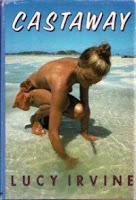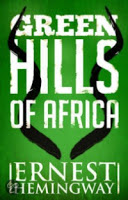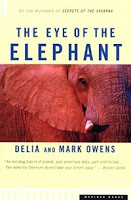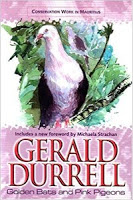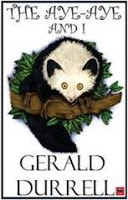A Naturalist\’s Journeys on the Roof of the World
by George B. Schaller
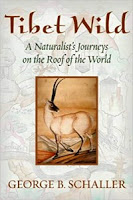
I thought- mostly due to the cover image- that this book was about the field study of a Tibetan antelope called chiru. That\’s only a few chapters. It covers many different trips and field studies the author conducted or participated in, travelling through remote regions of the Tibetan Plateau- encompassing areas of China, Pakistan, Tajikistan, Afghanistan and Mongolia. His studies were all about wildlife conservation- but there is (disappointingly for me) not a lot of description of actual animal encounters or behavior. What little is described of the wildlife, is brief. Mostly it is a report on how many animals they find in the various regions, how they tallied death numbers (from poaching, trophy hunters or natural causes and predation), and their survey of the areas- in particular noting the attitude of local people to the animals, what they knew of them, how they interacted with them, what local laws were in place and how well enforced, etc. A lot of it is just plain facts, and rather dry reading. I did find it interesting enough to complete- but I think (similar to Joy Adamson\’s Queen of Shaba) this is a case where the author is relating crucial info and not really giving vivid storytelling, as I have encountered more in his works (the few I\’ve read so far).
The book describes in passing the yak, kiang (or wild ass), Tibetan gazelle, golden eagle, Tibetan brown bear, Tibetan fox and a number of other animals. More attention is given to the chriu- mostly in head counts- and an entire chapter is about how the desire of the wealthy to own shawls woven from the fine wool of chiru caused the animals to be killed in great numbers until protection was put in place. There\’s a chapter about pika- small rodents- all about how they fit into the ecosystem, but unfortunately local inhabitants blamed pikas for degraded pastures, and poisoned them in great numbers (on the contrary, Schaller explains that pika are important for a healthy land). Another chapter describes efforts to locate, track and study snow leopards, and a final one the Tibetan bear- but in both cases they barely get a glimpse of the animals, relying mostly on camera traps and information gleaned from the few individuals they are able to radio-collar in order to track movements. More about politics and legal tangles involved in protecting Tibetan wild sheep- the argali- and the Marco Polo sheep. A lot of it is just we-went-here, we-did-this, or in many cases, how they failed to. If you want to read about the difficulties and drudgery of field work, or an overview on how lifestyles have changed in that region of the world over the past decades – Scahller went there many times with repeated visits, so he was able to give a bit of perspective on that- by all means this is a valuable account.
It\’s just not terribly intriguing to the casual reader like myself. Personally, I would really like to read the book of pika fables he wrote, in order to teach local Tibetans why the small animal was valuable. Being written later in his career, Schaller also includes some introspective musings in this book, looking at what his life\’s accomplishments had been so far-
I have not lived up to my potential. I am neither leader nor follower, and instead inadvertently subscribe to the dictum of Ralph Waldo Emerson: \”Do not go where the path may lead; go where there is no path and leave a trail.\” It affords me great pleasure to observe the rich and complex life of another species and write its biography. . . I have published interesting and useful scientific information. But all scientific work, unless there is the grand, everlasting insight of a Darwin, Einstein, or Newton, is soon supersceded, forgotten or rated at most a historical reference as others build upon your research. That is how science must proceed.
This makes me think of a comment on Wild Heritage. But I wholly recognize that Schaller\’s work in surveying and reporting on wildlife in various parts of the world has contributed greatly to conservation efforts, even if his books aren\’t wildly popular or always make fun reading (I however, plan to read all I can get my hands on, even though my library only has a few. I\’ve been collecting the others- have one on gorillas and another on pandas on my shelf. Really want to get the one about his first study, on lions in the Serengeti).
I borrowed this book from the public library.
Rating: 3/5 372 pages, 2012


